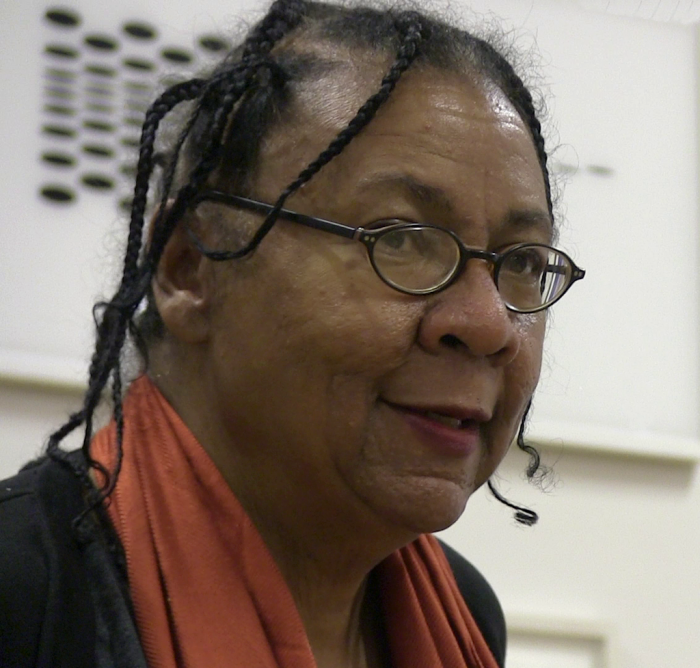Sharon’s one of our favorite mindful voices for loving-kindness—the root of empathy, and helpful activism. Excerpted from Real Change, copyright © 2020 by Sharon Salzberg, with permission from Flatiron Books. Get the book here.
One afternoon, I was presenting a workshop with bell hooks at the bell hooks Institute in Berea, Kentucky.
At one point, I spoke about how others might tell a story about us—about our worthiness and whether we belong or not, whether we’re included—and we take it in. That story might permeate our being until it becomes our story. We reshape our identity around it. Someone in the room said, “I don’t get that. People don’t tell stories about us. They don’t necessarily know us.”
I meant what I was saying to include not only narratives that people might say about us specifically but also the stories that a group of people or an institution might impose on us, even in very subtle ways, such as through architecture. The Insight Meditation Society, in Barre Massachusetts, has a stunning colonnade in front, four columns, two stories high, with seven stairs leading up to a large front door.
It turns out what I had always thought of as grand and inspiring told another story to another class of people: wheelchair users. It became clear that we needed to build a new ramp. It can be very difficult to retrofit an old building, and building a ramp in front was going to result in something that would be huge, not necessarily in harmony with the original architecture, and restrict the driveway. That’s why we had put the ramp in the back in the first place.
In the end, we decided the ramp must go out front, because of the story that it tells: you are part of what happens here, you are welcome, along with everyone else; please come through the front door. It may be troublesome—I, for one, am not great at navigating the driveway in my car—but it tells a story about who belongs, and that counts for everything.
At that same workshop in Kentucky, bell hooks offered another example of a behavior, a way of acting in the world, that told a very potent story of who is of worth and who isn’t. Growing up, bell would frequently see a rich white gentleman who dressed up his dog in a fancy outfit and sat the dog in the front seat of his car, while he kept his black maid riding in the back seat. How could someone do that? she thought, as it seemed to her that he honored a dog more than a person.
That left an indelible impression in young bell’s mind. It has taken her a lot of work on love over the years to counteract the kinds of stories she has experienced people telling about her place in the world based on her skin color.
Merck CEO Ken Frazier told The New York Times a story from the days of apartheid about seeing how deep-seated stories could ingrain behavior:
I lived one whole semester in Soweto. It was completely lawless. There were no streetlights. It was a completely separated area where people were contained, because the South African government’s job, as it saw it, was to separate blacks from whites.
But what I remember more than anything else was interacting with people who their entire lives had been told that they were second class, that they were inferior, and how hard it was to get people, particularly the men, to speak up in audible tones, because they had been in many ways told that their voice was not worth listening to. In addition to trying to teach people the substantive legal issues, it was a lot about trying to instill self-confidence.
Practice: Exploring our story lines
We do this practice to develop a different relationship to the stories others tell about us and the stories we tell ourselves about who we are and what we are capable of. Please sit comfortably, with either your eyes closed or slightly open, however you feel most at ease.
You can begin by bringing your attention to the breath, wherever you feel it most predominantly—the nostrils, chest, or abdomen. You can rest your attention on whatever sensations you find there as you breathe naturally. The breath is like our home base—if during the course of this session you feel lost or like too much is going on, you can just return your attention to the feeling of the breath.
See what thoughts may be present in your awareness. Allow yourself to notice thoughts arising as events in the mind. Experience thoughts coming and going in each moment without pushing them away or being carried off by them. Perhaps experience thoughts like clouds passing through the open sky of your awareness. Some heavy and thunderous, some light and airy, being aware of them all, exploring with gentle interest and curiosity.
It may be helpful to experience thoughts as boats passing along a river. Some passing so silently that you barely notice, some so unpleasant that your attention turns away, others so compelling that they highjack your attention and carry you far down the river. Explore the thoughts arising in your mind, noticing when you are pushing them away or being highjacked by them, and coming back again and again to noticing, taking a seat by the river, observing thoughts passing by.
As a habit, certain thought patterns arise that we tend to get lost in, overcome by, defined by, even as we resent or fear them. We can retrain our whole mental attitude by first learning to recognize these patterns and perhaps even calmly naming them: “Oh, here is the pattern of thinking, Everything is wrong, the pattern of thinking, I’m a failure, the pattern of thinking, I can never do enough.”
Once we recognize them, we can remind ourselves that they are just visiting. They are not essentially who we are. We couldn’t stop them from visiting, but we can let them go. Even if they return a thousand times a session, they still have the same nature—they are visiting, we don’t have to invite them to move in, we don’t have to blame ourselves for their coming, and we can learn to let them go.
After you finish this formal session of practice, you can explore bringing this skill of gentle interest, curiosity, and attention to your thoughts into your encounters throughout the day.
~
Excerpted from Real Change, copyright © 2020 by Sharon Salzberg, with permission from Flatiron Books. Get the book here.
~








Read 4 comments and reply